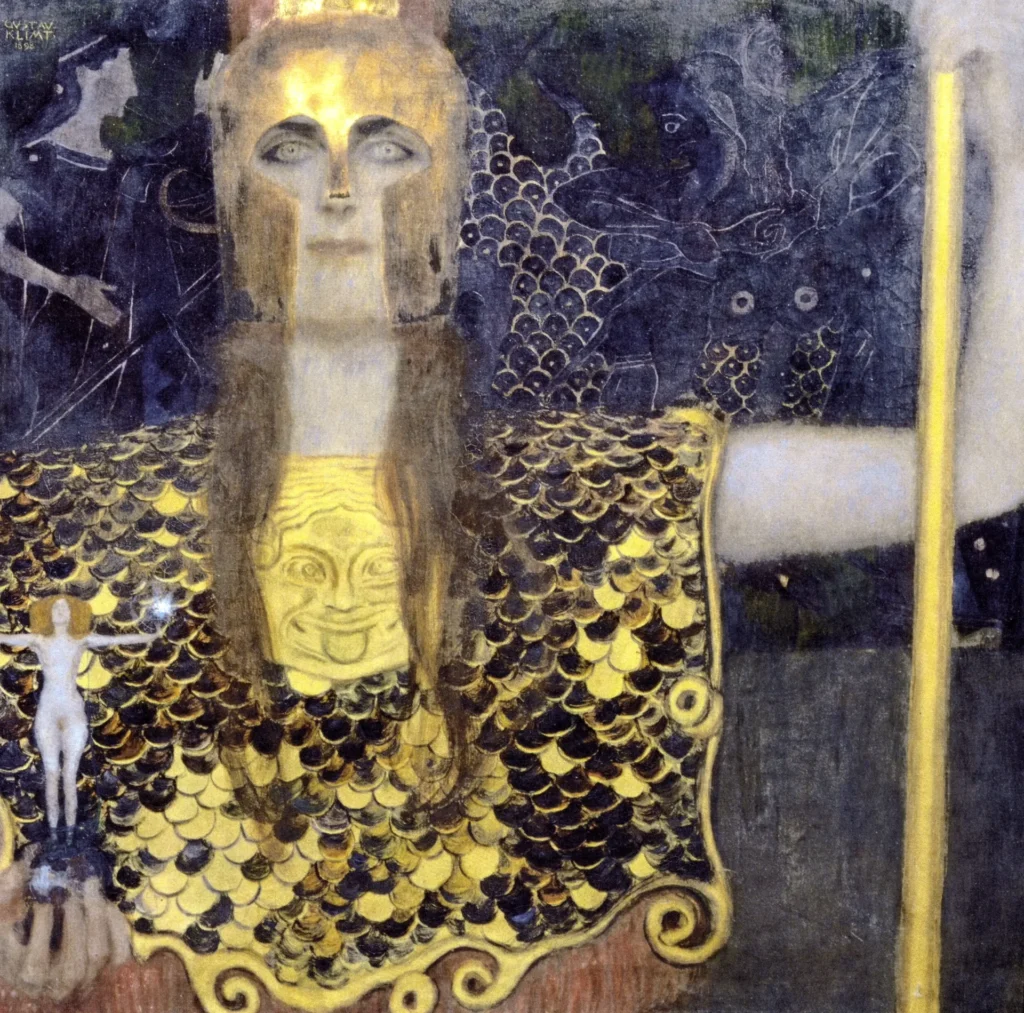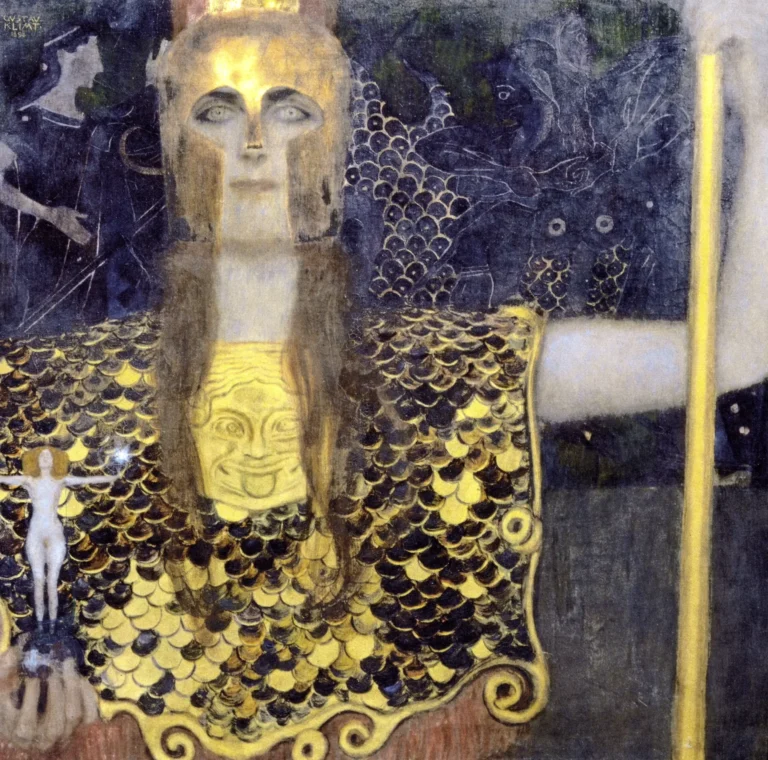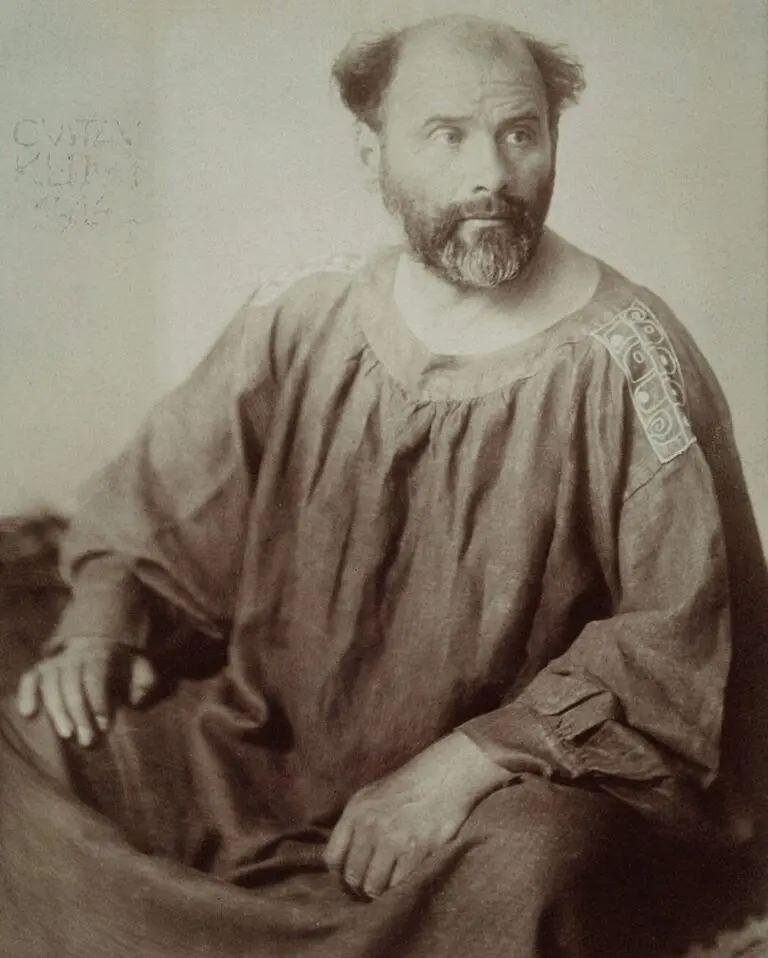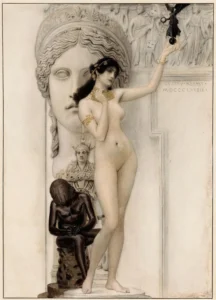Pallas Athena (1898)
Pallas Athena, completed in 1898 by Austrian Symbolist painter Gustav Klimt, serves as a striking embodiment of strength, artistry, and the struggle between tradition and innovation. The painting showcases the Greek goddess of wisdom, Athena, in a powerful stance, symbolizing modernity against the backdrop of ancient mythology. With rich symbolism and Klimt's signature style, the artwork stands as a pivotal representation of the Vienna Secession movement.
Year 1898
About the Artwork
This artwork reflects the artistic climate of the late 19th century, marked by the establishment of the Vienna Secession, a movement aimed at promoting modern art that diverged from conservative traditions. Klimt's portrayal of Athena, with her Medusa-emblazoned breastplate and the accompanying scene of Hercules, underscores a deep interplay of historical and mythological themes. The painting serves as a manifesto for the artists' group, embodying their vision of intertwining different artistic disciplines and redefining contemporary art. Klimt’s bold representation of Athena as a powerful figure, devoid of overt sexuality, signifies a departure from traditional female portrayals, emphasizing her role as a revered and wise patroness of the arts.
Did You Know
Liked what you see? Add it to your collection.
Enjoyed reading? Share it.
... continued
Gustav Klimt's Pallas Athena is a significant oil painting created in 1898, which holds several layers of meaning and artistic significance.
Artist and Context
The painting was produced by Gustav Klimt, an Austrian Symbolist painter, during a period of great artistic innovation. In 1897, Klimt, along with other artists like Carl Moll and Josef Engelhart, founded the Society of Austrian Fine Artists–Secession, a movement that sought to break away from traditional art forms and embrace modernity.
Subject and Symbolism
The painting depicts Pallas Athena, the Greek goddess of wisdom, art, war, and peace. Athena is portrayed in a powerful and aggressive pose, holding a small nude figure in her right hand, which can be interpreted as embodying "Nuda Veritas" or "Naked Truth". Her metal breastplate features a Medusa’s head, adding to the symbolic and protective nature of the goddess. In the background, there is a scene of Hercules battling the sea monster Triton, symbolizing the struggle between new art and conservative traditions.
Style and Technique
Pallas Athena is characterized by Klimt's developing "Secession" style, which blends elements of Symbolism and Art Nouveau. The painting is executed in oil on canvas and measures 75 x 75 cm (29.5 x 29.5 inches). The frame, designed by Klimt and made by his brother Georg, is an integral part of the artwork and features a frieze borrowed from a black-figure Attic vase of the 6th century BC.
Exhibition and Significance
The painting was first shown at the second exhibition of the Vienna Secession in 1898 and served as a programmatic image for the new artists’ group. It reflects the Secession movement's emphasis on unity between painting, sculpture, and architecture, as well as its fascination with ancient Greek culture and mythology.
Interpretation
Athena in this painting is depicted as a powerful, asexual figure, contrasting with Klimt's other works that often emphasize female sexuality. This portrayal highlights Athena's divinity and her role as a patron goddess of the arts and wisdom, rather than her sexual aspects.
Current Location
The painting is part of the collection at the Historisches Museum der Stadt Wien (Vienna Museum) in Austria.










